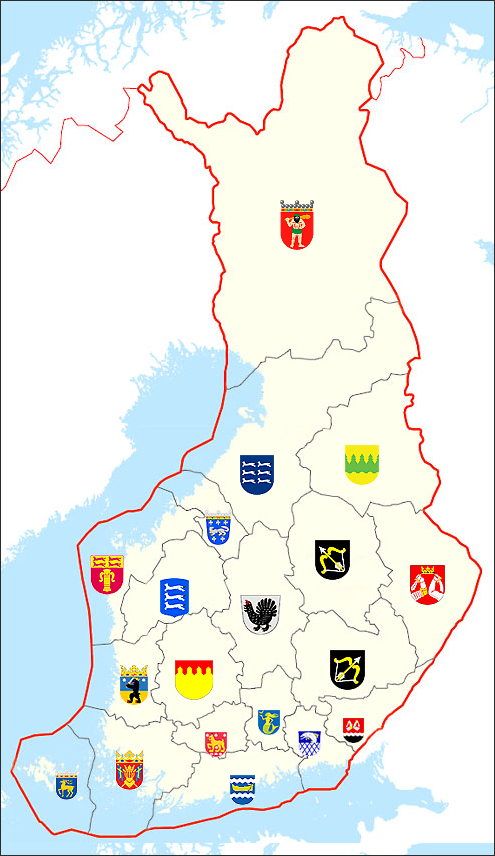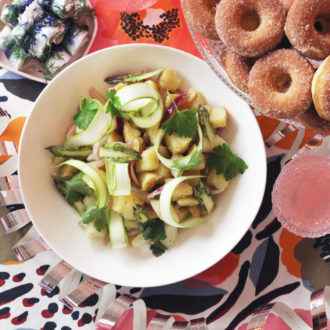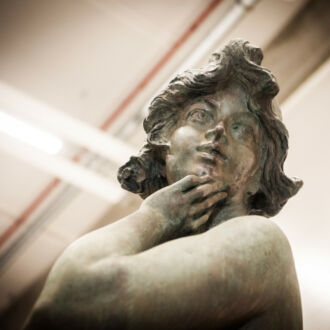Whether they feature nature, history, culture or events, all 19 regions of Finland take pride in their own unique characteristics. The map below shows how the regions are divided – the grey lines indicate the borders of the historical provinces of Finland. Click on a coat of arms to see more about each area!
Map © National Land Survey of Finland
1. Åland (Ahvenanmaa)
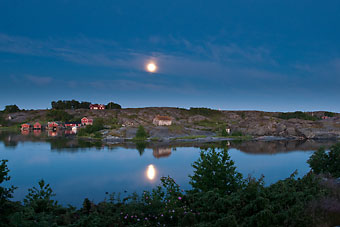
A highlight for visitors to Kökar Archipelago in Åland is a sailing tour amongst hundreds of islands.Photo: Robert Smith/Visit Finland
Åland differs from other Finnish regions in many respects. It is an archipelago of about 80 inhabited islands (as well as thousands of skerries) and is located at the entrance to the Gulf of Bothnia. It is also an autonomous, demilitarized and monolingual Swedish-speaking area. The capital, Mariehamn, is a lively town due to its international harbour halfway between Sweden and mainland Finland.
2. Finland Proper (Varsinais-Suomi)
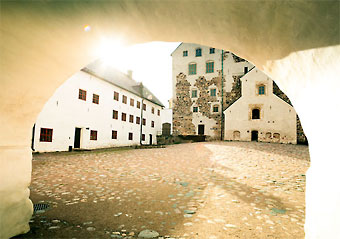
Turku Castle is the largest surviving medieval building in Finland.Photo: Elina Sirparanta/Visit Finland
This region was historically called Finland as it was the home of the tribe known as the Finns (while other regions of southern Finland were inhabited by the Tavastians and the Karelians). Its capital, Turku, was the European Capital of Culture in 2011. Wellknown places within the region include the small town of Naantali, home of the popular Moomin World theme park, and Kultaranta, the summer residence of the President of Finland. The region also features the idyllic Archipelago Sea area.
3. Uusimaa
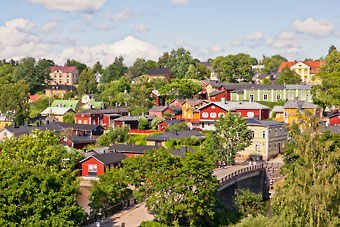
Porvoo old town consists of medieval streets with predominantly wooden houses.Photo: Jussi Hellsten/Visit Finland
Finland’s capital of Helsinki is the most wellknown area of the Uusimaa region. The lively summer towns of Hanko (located on the southernmost tip of Finland) and Porvoo (which features a magnificent old medieval town) are a must-see. However, Uusimaa is not all about urban centres. The region also features plenty of agriculture and four large national parks!
4. Satakunta

Old Rauma, the wooden city centre of the town of Rauma, Finland, is listed as a UNESCO World Heritage Site.Photo: Visit Finland
While Satakunta, which literally means ‘hundred’, is an important agricultural region, its capital, Pori, and the region’s second-largest town of Rauma are known for their industrial history. In the heart of Rauma is Old Rauma, a UNESCO world heritage site featuring old wooden architecture. The dialects spoken in Satakunta are considered difficult to understand as the speech is rapid and many words are shortened.
5. Tavastia Proper (Kanta-Häme)
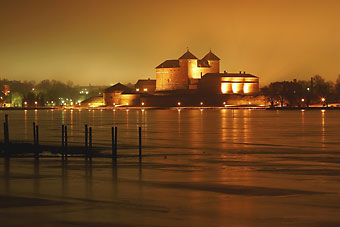
Believed to have been built at the end of the 13th century, Häme Castle in Hämeenlinna is one of Finland’s medieval royal castles.Photo: Visit Finland
The city of Hämeenlinna, with its Häme Castle, dominates this old region. Known as reliable, persistent and indomitable, Tavastians are considered archetypal Finns. The celebrated Finnish novel, Seven Brothers, by Aleksis Kivi, is set in the Tavastia area.
6. Päijänne Tavastia (Päijät-Häme)
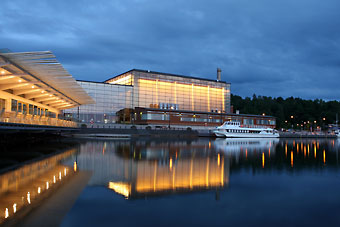
Sibelius Hall in Lahti, whose outstanding acoustics are considered one of the best internationally, is home to the Lahti Symphony Orchestra.Photo: Sami Lettojärvi/Visit Finland
Päijänne Tavastia is located south of Finland’s second largest lake, Päijänne. Its capital, Lahti, is known for hosting world ski championships and the annual Lahti Ski Games. Sibelius Hall in Lahti is a renowned venue of classical music concerts. The geography of the region is strongly influenced by Salpausselkä, a ridge system formed during the ice age.
7. Kymenlaakso
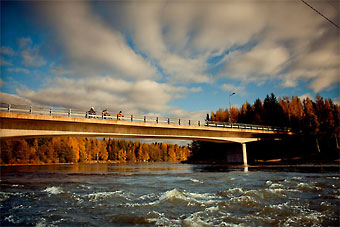
As one of the largest rivers in Southern Finland, Kymi river in Kotka is a major source of hydroelectricity.Photo: Aleksi Koskinen/Visit Finland
Kymenlaakso means ‘the valley of the Kymi river’ (Kymijoki in Finnish), which is one of the major rivers of Finland. Its capital of Kotka is located at the delta of the river and is a major Finnish sea port. The region’s other major town, Kouvola, has a strong tradition as a railroad town. Verla Groundwood and Board Mill museum in Jaala is a UNESCO world heritage site.
8. South Karelia (Etelä-Karjala)

Karelian pastries or Karelian pies are traditional pasties from the region of Karelia.Photo: Elina Sirparanta/Visit Finland
Located near the eastern border of Finland, South Karelia’s famous Saimaa Lakeland district and picturesque Imatra Rapids have attracted tourists, artists and even royalty over the centuries. Delicacies worth tasting in this area include Karelian pastries, Karelian hotpot and special meat pastries called vety (hydrogen) and atomi (atom) from the town of Lappeenranta. The South Karelian slogan “Make food, not war!” encapsulates the region’s character.
9. Pirkanmaa
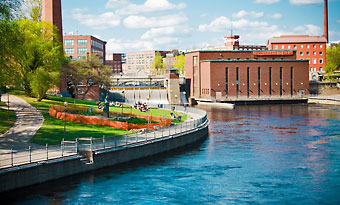
The renovated Finlayson industrial area of Tampere today accommodates cultural, culinary and educational facilities.
Photo: Alexander Savin, Flickr.com, CC BY 2.0
The capital of this region, Tampere, is known as ‘Finland’s Manchester’ due to its red brick houses and its industrial heritage. Close to Tampere is the small town of Nokia where the Finnish mobile phone giant started as a pulp mill in 1865. The culinary special of the area is mustamakkara (‘black sausage’), best enjoyed with lingonberry jam and milk from a local market stall.
10. Southern Savonia (Etelä-Savo)
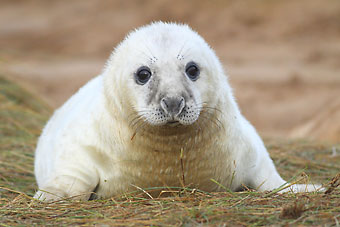
Saimaa ringed seals are among the most endangered seals in the world, having a total population of only about 310 individuals.Photo: Guido Muratore/Visit Finland
The city of Savonlinna in South Savonia is known for its annual opera festival, which takes place in the medieval castle of Olavinlinna. The castle is surrounded by spectacular lake scenery, where visitors have the opportunity to spot the extremely rare Saimaa ringed seal. The region is also known for its religious buildings, such as Valamo orthodox monastery, Lintula convent and the world’s largest wooden church in Kerimäki.
11. Ostrobothnia (Pohjanmaa)
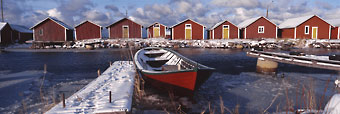
Boat houses in Raippaluoto, located in the narrowest part of the Gulf of Bothnia in the northern part of the Baltic sea.Photo: Kari Palsila/Visit Finland
Ostrobothnia is one of the two Finnish regions with a Swedish speaking majority, the other being Åland. The landscape in Ostrobothnia is flat compared to other regions in Finland and the fertile soil is conducive to farming. Close to the region’s capital, Vaasa, is the archipelago of Kvarken, a UNESCO World Heritage Site.
12. Southern Ostrobothnia (Etelä-Pohjanmaa)
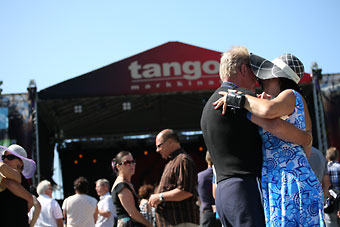
The Tango Festival in Seinäjoki takes place in July each year with concerts and dance contests amidst a unique festival atmosphere.Photo: Miika Havo/Seinäjoen Tangomarkkinat
This region is probably best known as the home of the stunt group The Dudesons and the annual Tango Festival, held in Seinäjoki, the region’s capital. This region is split by various rivers and boasts some of Finland’s most arable farmlands. People from Southern Ostrobothnia are often characterized as straightforward and stubborn.
13. Central Finland (Keski-Suomi)
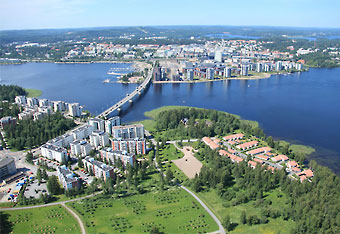
The city of Jyväskylä, the largest city in Central Finland, is surrounded by lots of lakes.Photo: Suomen Ilmakuva Oy/Visit Finland
The name Central Finland is a bit misleading and should not be taken literally. It is located in the center of southern Finland and is surrounded by lakes, which may be why the annual Rally Finland competition is also known as the 1000 Lakes Rally. The cityscape of the region’s capital, Jyväskylä, is dominated by the buildings of the famous Finnish architect Alvar Aalto.
14. Central Ostrobothnia (Keski-Pohjanmaa)
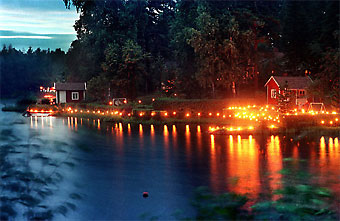
Dating back more than 100 years, the Venetian Night celebration in Kokkola features the sea and kilometres of torches, bonfires and fireworks along the coastline.Photo: City of Kokkola
Central Ostrobothnia’s capital is Kokkola. The area is best known for its folk music traditions; Finland’s biggest folk music festival is held annually in the village of Kaustinen. Cows are a regular sight in this region, as Kokkola and its surroundings are the largest milk producers in Finland. One of Kokkola’s specialties is its Venetian Night celebration, held each year at the end of August.
15. Northern Savonia (Pohjois-Savo)
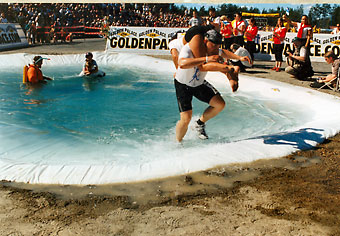
The wife-carrying world championships in Sonkajärvi attracts international media publicity.Photo: Visit Finland
The Savonian people are characterized as wily, easy-going and full of humor. Reflecting this characteristic, the region hosts the annual Wife-Carrying World Championships held in Sonkajärvi. While exploring the atmosphere and wares of the art nouveau market hall in the region’s largest city, Kuopio, visitors can taste the specialty of North Savonian cuisine, kalakukko, fish baked in rye crust.
16. North Karelia (Pohjois-Karjala)
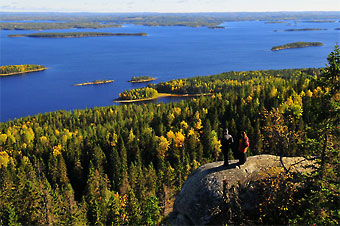
Koli national park is a national park in the North Karelia region.Photo: Hernan Patino/Visit Finland
The North Karelians are often described as cheerful, hospitable and talkative. These characteristics are on display each year at the music festival Ilosaarirock held in the region’s capital, Joensuu. Billed as Finland’s friendliest festival, this music event attracts audiences and bands from all over the world. On a quitter note, the peaceful landscapes of Koli national park offer breathtaking views and have inspired many Finnish artists from Sibelius to Gallen-Kallela.
17. Northern Ostrobothnia (Pohjois-Pohjanmaa)

Oulanka river in Kuusamo covers 135 km and is part of the River Koutajoki waterway that runs into the White Sea.Photo: Hannu Hautala/Visit Finland
Oulu, the capital of this large region, is known as a city of technology and startups. However, this region has much more to offer. For example, the town of Kuusamo is home to the Ruka ski center and the area is surrounded by vast wilderness and pristine national parks. The contrasts of Finnish nature, such as, a flat coastline, open swamps and wild highlands, are obvious here.
18. Kainuu

Hyrynsalmi is best-known for its ski resort Ukkohalla and the annual swamp soccer world championships (above).Photo: Visit Finland
One-third of Kainuu’s land is covered by swamps, and the region’s imaginative inhabitants have taken advantage of this unique feature: the swamp soccer world championship is held annually in the village of Hyrynsalmi. Finnish baseball is also very popular in this region. The compiler of the Finnish national epic Kalevala, Elias Lönnrot, started his poem-collecting journeys in Kainuu.
19. Lapland (Lappi)
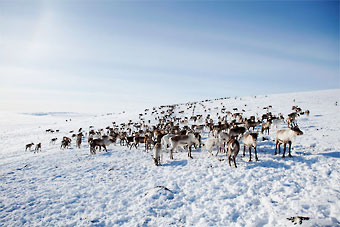
In Lapland all reindeer are domesticated, which means that all reindeer hunting is prohibited.Photo: Mikko Ryhänen/Visit Finland
Lapland is the largest and northernmost of the regions of Finland. The Sami people inhabit some of its municipalities. Needless to say, Santa Claus, reindeer, the northern lights and great expanses of untouched wilderness characterize this unique region. The surroundings are suited to outdoor activities like skiing, hiking, white water rafting and snowmobiling. Rovaniemi is the capital of this region.
By Emilia Kangasluoma, Katariina Lius and Kasperi Teittinen, December 2013
